#blog provence france
Explore tagged Tumblr posts
Text

Aix-en-Provence, France (by Despina Galani)
1K notes
·
View notes
Text

Provence (France)
#photography#mescalinartofnoise#photographie#original photographers#couleurs#france#lumière#fotografia#beauty#soleil#zen#love#paysage#landscape#nuages#clouds#balcon#ciel#sky#Provence#photography blog#original photography on tumblr
30 notes
·
View notes
Text
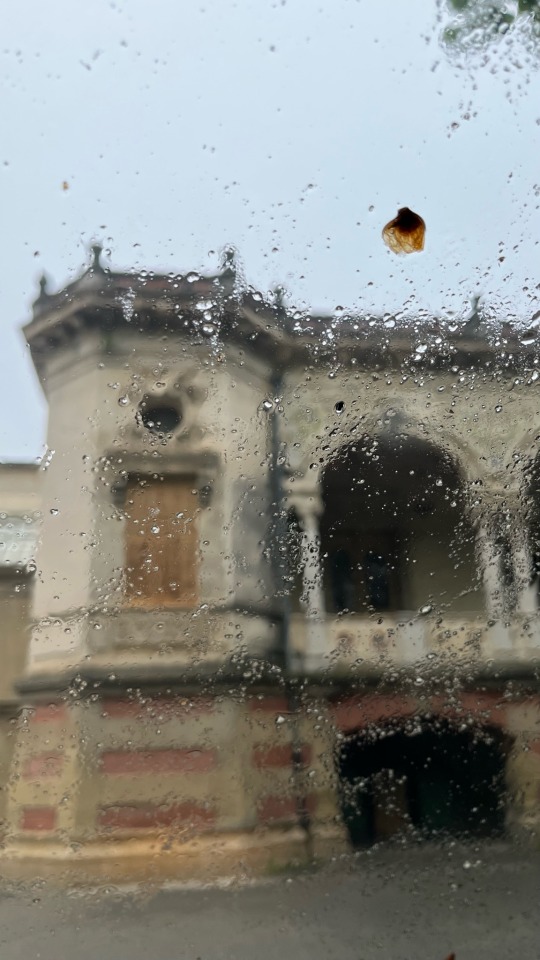
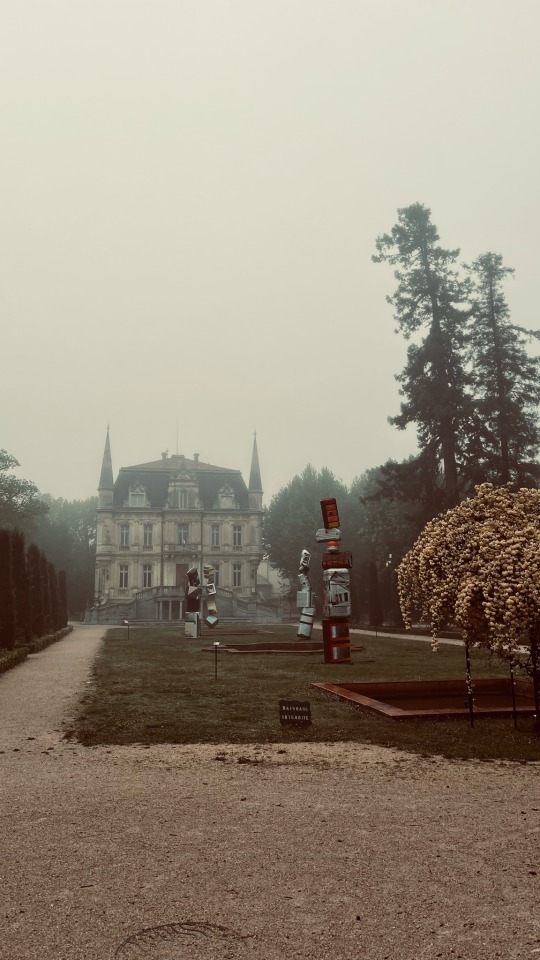
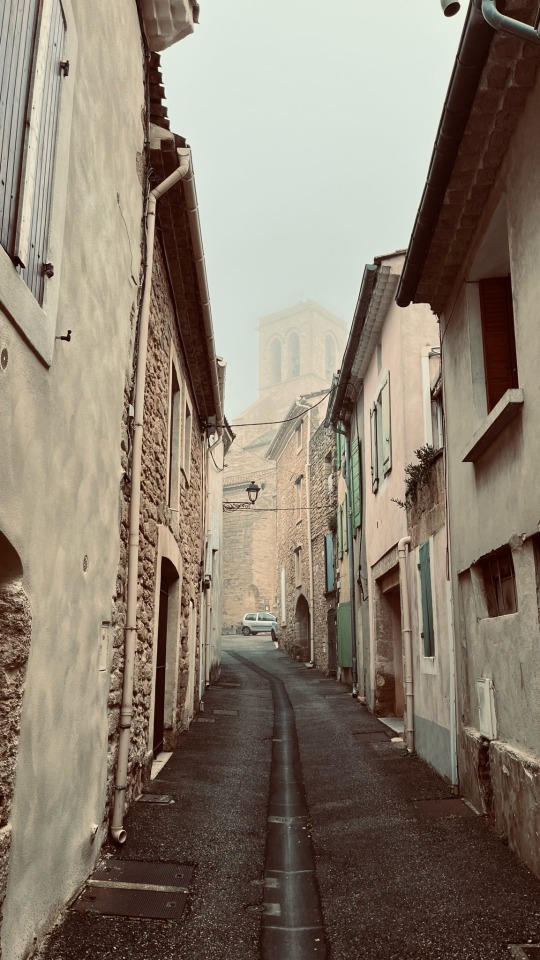
Courthézon, Vaucluse, France.
#france#provence#vaucluse#original photography on tumblr#iphone13mini#original photographers#original photography blog#photographie#photografy#iphone#Courthezon
30 notes
·
View notes
Text
Du Travailler
The red wines of Provence are something rarely seen in the US, but they are my favorite representations of Cab and Syrah in the world. They basically never say what’s in them on the bottle, and people don’t just automatically *know* like the regions of BDX or Rhone, but they typically run nearly 100% cab down to around 50/50. Which has always struck me as weird, as the “normal”–and far more…

View On WordPress
#2011#Alpilles#Best wine reviews#Cabernet#Central Coast Critic#Domaine de Trevallon#France Sud#IGP#MArtines wine#Natural wine#Provence#Provence red wines#Red blend#Red Wine#Saint-Etienne du gres#soif#Soif Wine Blog#South France#Stephen McConnell#Stephen McConnell Wine Blog#Steve McConnell#Steve McConnell Wine Blog#Syrah#wine1percent
0 notes
Text
Découvrez Côte d'Azur Insider, le blog Côte d'Azur lancé fin 2022.
Que faire sur la Côte d'Azur, où sortir ?
Faites confiance aux initiés.
Restos, brunches, rooftops, bars, events, plages, balades, réseaux sociaux, ...
youtube
#cotedazur#cotedazurnow#cotedazurfrance#french riviera#france#holiday destination#holiday#provence#south of france#blog#travel blog#Youtube
1 note
·
View note
Text

Writer Spotlight: Jamie Beck
Jamie Beck is a photographer residing in Provence, France. Her Tumblr blog, From Me To You, became immensely successful shortly after launching in 2009. Soon after, Jamie, along with her partner Kevin Burg, pioneered the use of Cinemagraphs in creative storytelling for brands. Since then, she has produced marketing and advertising campaigns for companies like Google, Samsung, Netflix, Disney, Microsoft, Nike, Volvo, and MTV, and was included in Adweek Magazine’s “Creative 100” among the industry’s top Visual Artists. In 2022, she released her first book, An American in Provence, which became a NYT Bestseller and Amazon #1 book in multiple categories, and featured in publications such as Vogue, goop, Who What Wear, and Forbes. Flowers of Provence is Jamie’s second book.
Can you tell us about how The Flowers of Provence came to be?
I refer to Provence often as ‘The Garden of Eden’ for her harmonious seasons that bring an ever-changing floral bounty through the landscape. My greatest joy in life is telling her story of flowers through photography so that we may all enjoy them, their beauty, their symbolism, and their contribution to the harmony of this land just a bit longer.

(Photograph: Jamie Beck)
How do your photography and writing work together? Do you write as part of your practice?
I constantly write small notations, which usually occur when I am alone in nature with the intention of creating a photograph or in my studio working alone on a still life. I write as I think in my head, so I have made it a very strict practice that when a thought or idea comes up, I stop and quickly write the text in the notes app on my phone or in a pocket journal I keep with me most of the time. If I don’t stop and write it down at that moment, I find it is gone forever. It is also the same practice for shooting flowers, especially in a place as seasonal as Provence. If I see something, I must capture it right away because it could be gone tomorrow.

(Photograph: Jamie Beck)
You got your start in commercial photography. What’s something you learned in those fields that has served you well in your current creative direction?
I think my understanding of bridging art and commerce came from my commercial photography background. I can make beautiful photographs of flowers all day long, but how to make a living off your art is a completely different skill that I am fortunate enough to have learned by working with so many different creative brands and products in the past.
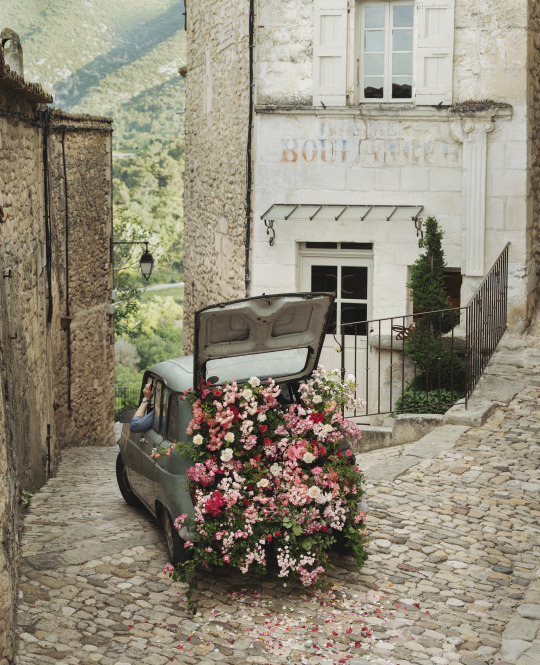
(Photograph: Jamie Beck)
Do you remember your first photograph?
Absolutely! I was 13 years old. My mother gave me her old Pentax 35mm film camera to play with. When I looked through the viewfinder, it was as if the imaginary world in my head could finally come to life! I gave my best friend a makeover, put her in an evening gown in the backyard of my parents’ house in Texas, and made my first photograph, which I thought was so glamorous! So Vogue!
You situate your photographic work with an introduction that charts the seasons in Provence through flowers. Are there any authors from the fields of nature writing and writing place that inspire you?
I absolutely adore Monty Don! His writing, his shoes, and his ease with nature and flowers—that’s a world in which I want to live. I also love Floret Flowers, especially on social media, as a way to learn the science behind flowers and how to grow them.
How did you decide on the order of the images within The Flowers of Provence?
Something I didn’t anticipate with a book deal is that I would actually be the one doing the layouts! I assumed I would hand over a folder of images, and an art director would decide the order. At first, it was overwhelming to sort through it all because the work is so personal, and I’m so visual. But in the end, it had to be me. It had to be my story and flow to be truly authentic. I tried to move through the seasons and colors of the landscape in a harmonious way that felt a bit magical, just as discovering Provence has felt to me.
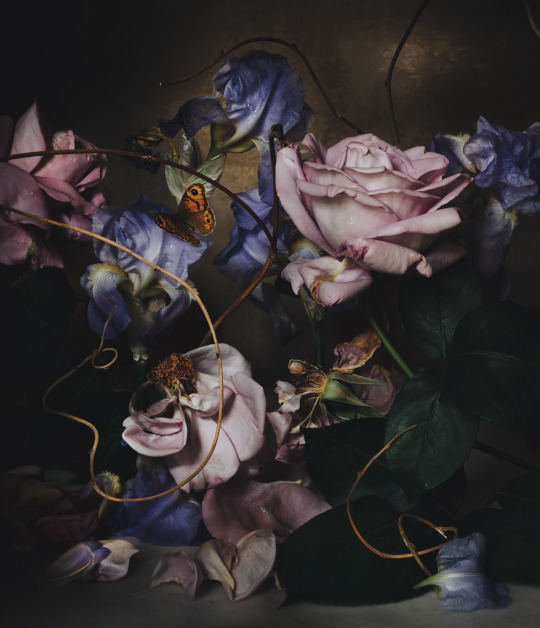
(Photograph: Jamie Beck)
How do you practice self-care when juggling work and life commitments alongside the creative process?
The creative process is typically a result that comes out of taking time for self-care. I get some of my best ideas for photographic projects or writing when I am in a bath or shower or go for a long (and restorative) walk in nature. Doing things for myself, such as how I dress or do my hair and makeup, is another form of creative expression that is satisfying.
What’s a place or motif you’d like to photograph that you haven’t had a chance to yet?
I am really interested in discovering more formal gardens in France. I like the idea of garden portraiture, trying to really capture the essence and spirit of places where man and nature intertwine.
Which artists do you return to for inspiration?
I’m absolutely obsessed with Édouard Manet—his color pallet and subject matter.
What are three things you can’t live without as an artist?
My camera, the French light, and flowers, of course.
What’s your favorite flower to photograph, and why?
I love roses. They remind me of my grandmother, who always grew roses and was my first teacher of nature. The perfume of roses and the vast variety of colors, names, and styles all make me totally crazy. I just love them. They simply bring me joy the same way seeing a rainbow in the sky does.
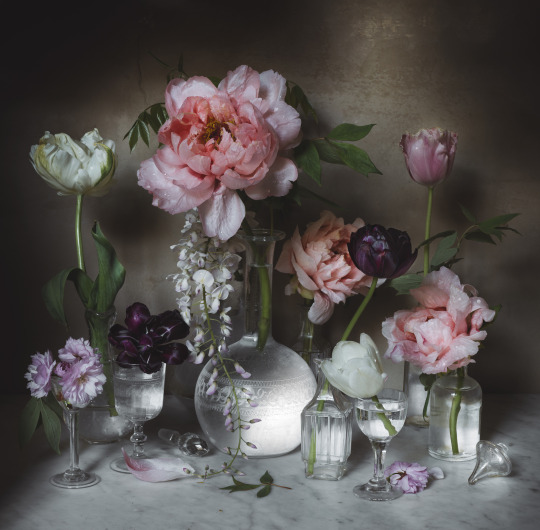
(Photograph: Jamie Beck)
#writer spotlight#jamie beck#the flowers of provence#art#photography#flowers#cottagecore#aesthetics#naturecore#flowercore#still life#nature aesthetic#artist#artists on tumblr#fine art photography#long post#travel#France#Provence#original photographers#photographers on tumblr
1K notes
·
View notes
Photo

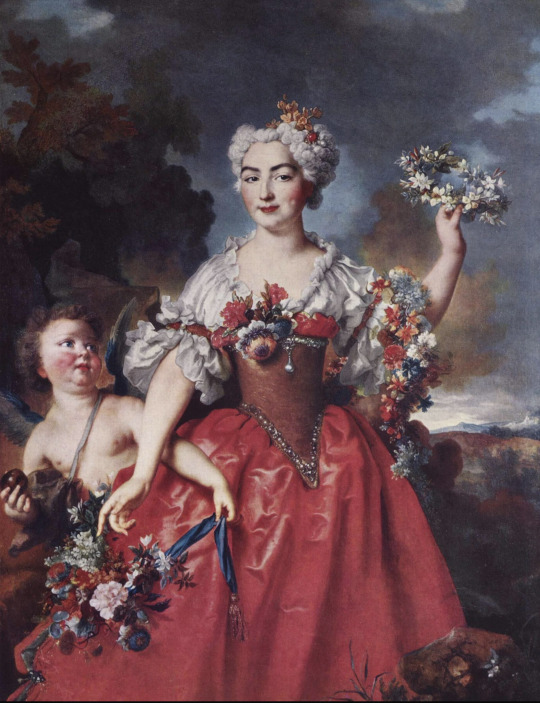

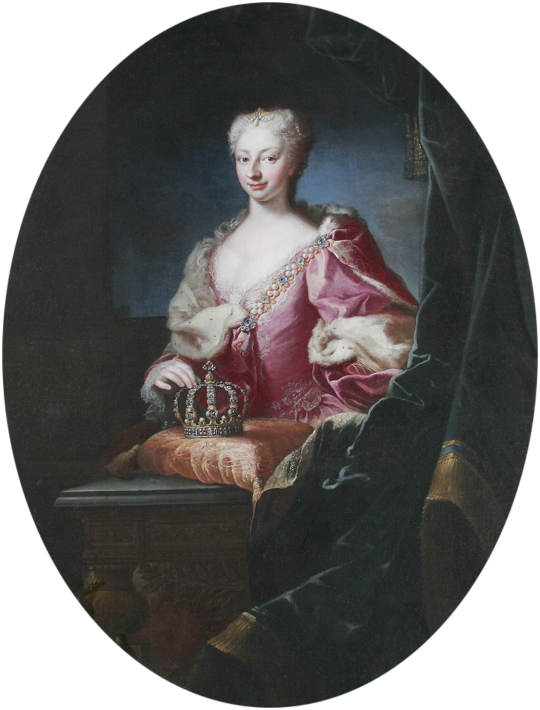
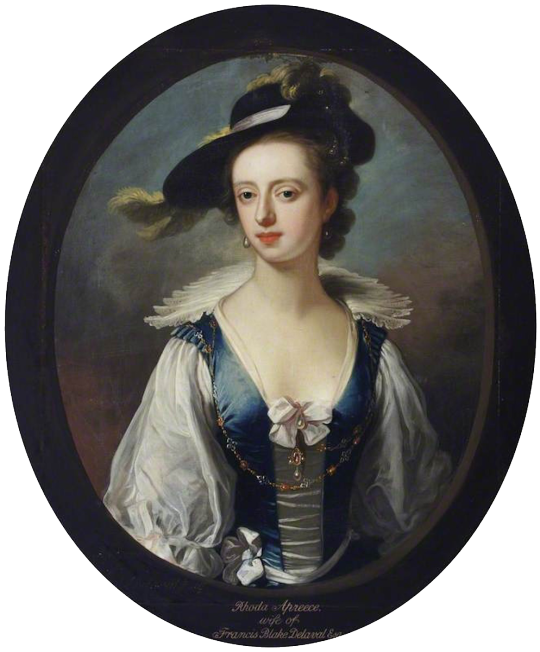
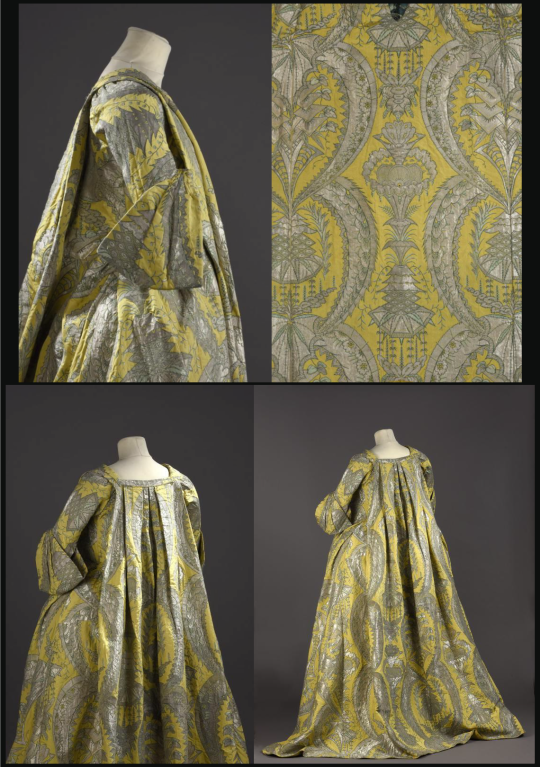
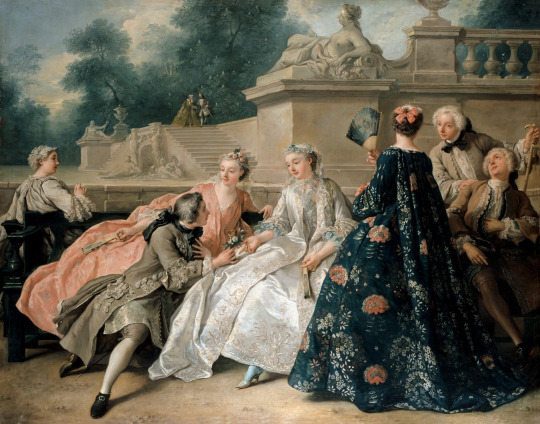



Early 1730s dresses (from top to bottom) -
1730 Tea Party at Lord Harrington's by C. Phillips detail (Yale Center for British Art, Yale University - New Haven, Connecticut, USA). Probably from Wikimedia; fixed spots with Pshop 1247X1623. There are many caps and veils, square necklines, and laced bodices with revers. But full-blown panniers are not to be seen.
1730 Marquise de Gueydan as Flora by Nicolas de Largillière (Musée Granee - Aix-en-Provence, Bouches-du-Rhône, Provence-Alpes-Côte d'Azur, France). From cutlermiles.com/portrait-of-marquise-de-gueydan-as-flora-nicolas-de-largilliere/ 1908X2484. She wears a stout Swiss belt and cleft coiffure that harken back to the late Louis XIV era.
ca. 1730 Empress Elisabeth Christine by Johann Gottfried Auerbach (auctioned, probably by Lempertz). From Wikimedia trimmed 1715X2352. She wears a round skirt and a scoop neckline.
ca. 1730 Polyxena of Hesse-Rotenburg, Queen of Sardinia by Maria Giovanna Clementi (location ?). From tumblr.com/blog/view/jeannepompadour; enlarged by half 1053X1385. Her dress has a deep V neckline filled in by a modesty piece.
ca. 1730 Rhoda Apreece, Mrs Francis Blake Delaval attributed to Enoch Seeman the Younger (Seaton Delaval - Seaton Sluice, Northumberland, UK). From artuk.org; enlarged by half 994X1200. The ruff makes this a Van Dyck revival dress. The laced vest and jaunty hat lend a casual air to the portrait.
ca. 1730 Robe volante (Musée de la Mode - Paris, France). From fripperiesandfobs.tumblr.com-post-139802377452-robe-volante-ca-1730-from-the-palais-galliera 1140X1620. Dresses before the 1750s often had cuffs that could be substantial like these.
1731 Die Liebeserklärung by Jean François de Troy (Sanssouci, Stiftung Preußische Schlösser und Gärten Berlin - Brandenburg, Germany). From artsandculture.google.com/asset/die-liebeserklärung-jean-françois-de-troy/XAFpCyLiWrxHZw?h 3074X24.12. Known in the Anglophone world as “The Declaration of Love. The large patterns mark this as early century. The robe à la française is firmly established in the form it would take until the late Louis XVI period.
1731 Infanta Maria Teresa Antonia de Borbón by Jean Ranc (Museo del Prado - Madrid, Spain). From their Web site; removed spots and streaks with Photoshop 2621X3051. Spain was ruled by Borbóns after the last Habsburg was cleared out in the early 1700s.
1731 Julia Calverley, Lady Trevelyan, by Enoch Seeman the Younger (Wallington Hall - Wallington, Northumberland, UK). From nationaltrustcollections.org.uk/object/584399; erased navigation marks in corners & fixed spots w Pshop 1616X1992. Clasps replace lacing to close this bodice.
1731 Lady by John Vanderbank (location ?). From the Philip Mould Historical Portraits Image Library 920X1214. The dress is Van Dyck revival similar to the one worn by Rhoda Apreece.
#1730s fashion#Georgian fashion#Louis XV fashion#Rococo fashion#C. Phillips#Marquise de Gueydan#Nicolas de Largillière#Kaiserin Elisabeth Christine#Johann Gottfried Auerbach#scoop neckline#Polyxena von Hesse-Rotenburg#Maria Giovanna Clementi#Rhoda Apreece#Enoch Seeman the Younger#feathered hat#robe volante#The Declaration of Love#Jean François de Troy#robe à la française#Infanta Maria Teresa Antonia de Borbón#tabbed bodice#Jean Ranc#Julia Calverley#cap#John Vanderbank
65 notes
·
View notes
Text
American Riviera Orchard - the dream vs the reality. A pictorial essay. by u/Mickleborough
American Riviera Orchard - the dream vs the reality. A pictorial essay. There have been a couple of posts about the unfortunate name chosen by Meghan for her (cough) lifestyle line.Great minds think alike; at the same time, I was curious to find out if the name evoked what I thought it was intended to.The (cough) logoFauxligraphy - my guess is that it’s been improved with computer fonts. For example, the lower case C’s, A’s, and R’s are very regular. The lower case D is pure Meghan fauxligraphy - there’s no way you can write that without lifting your pen. Note that the capital A and R are disproportionately narrow compared to the generous O. No money for a pro? Distinct amateur vibes.The dreamWe know what that is, thanks to Meghan’s nightmare sequence.Flowers - so feminine and genteel and ladylike. What is it with Meghan and flowers? (‘I’m a lady! I do lady’s things!’). The kitchen - the heart of the home, complete with weirdly textured mixing bowl and an impractical receptacle for fruit to be used in a kitchen, as opposed to displayed.The Woman in Black. Run for your lives! In the video, the door actually opens slowly - with no human aid…Actually this is more frightening - there’s a lot to be said for soft focus where Meghan’s concerned. We know she’s on a red carpet because her red dress matches it. Not sure what her shoes are meant to go with.The realityLet’s break down each word of that outlandish name. What does each word make you think of?AmericanApple pie’s often invoked as being quintessentially American (along with mom).RivieraThe Riviera‘s the American term for the South of France. Villefranche-sur-Mer, in Provence, east of Nice.Oh wait - you’re supposed to put the words together.American RivieraSanta Barbara - considered the southernmost part of Northern California - bills itself the American Riviera because of its balmy weather and scenic coastline. It’s interesting that Meghan’s gone for a name which invokes an original, namely the French Riviera.OrchardShade Farm Management, an 800-acre avocado and citrus orchard in Santa Barbara.ConclusionIn my opinion the 3 words don’t add up to the whole as promulgated by Meghan in her photos. ‘American Riviera’ has a different feel - leisured, moneyed - from the more workaday, hard labour ‘orchard’.This looks like another instance Meghanese. It’s like ‘silk scouring pad’ or ‘crushed gold ear wax’ - the concepts just don’t go together.‘American Riviera’ on its own would’ve conjured up the fine china, linen, elite lifestyle Meghan’s aiming for. Adding ‘orchard’ makes it sound like what the Beverly Hillbillies do. post link: https://ift.tt/NqXzckn author: Mickleborough submitted: March 20, 2024 at 09:42PM via SaintMeghanMarkle on Reddit disclaimer: all views + opinions expressed by the author of this post, as well as any comments and reblogs, are solely the author's own; they do not necessarily reflect the views of the administrator of this Tumblr blog. For entertainment only.
#SaintMeghanMarkle#harry and meghan#meghan markle#prince harry#fucking grifters#Worldwide Privacy Tour#Instagram loving bitch wife#Backgrid#voetsek meghan#walmart wallis#markled#archewell#archewell foundation#megxit#duke and duchess of sussex#duke of sussex#duchess of sussex#doria ragland#rent a royal#clevr#clevr blends#lemonada media#archetypes with meghan#invictus#invictus games#Sussex#WAAAGH#american riviera orchard#Mickleborough
12 notes
·
View notes
Note
https://www.tumblr.com/strscrossed/774485950198906880/book-recommendations-extra-points-if-theres?source=share
Honestly idk 😅 i used to read a lot but I haven't picked up a book in years except for one but it was a health book so it doesn't count lol
i'd say it counts. tbh i read one fiction and one nonfiction book at a time to keep myself out of a slump. i can't say i read a ton of spice. it's not usually a requirement only because smut doesn't hit in books the same way it does in fanfic. but here are some fantasy recs:
smutty/spicy recs:
the hurricane wars trilogy - only two books are out at this time. yes this was a reylo fic originally but it's so good and i devoured every second of it.
receiver of many series - i cannot whore this book series out enough. there are three books so far but it's basically a retelling of hades/persephone and it is classified as erotica. like it is SPICY. i know the author follows this blog so i want to tell her once again that i adore these books.
serpent & dove - tbh i only liked the first book and the second book was a downgrade. not too spicy but there is spice. it's basically arranged marriage between a witch and a witch hunter. and how that story goes.
other fiction recs
the lunar chronicles - a sci-fi retelling of cinderella, little red riding hood, rapunzel, and snow white. in the future, humanity has colonized the moon and this follows four girls who are in the center of all this. one of my favorite book series.
the falling kingdoms - one of my "i didn't say it was good, i said i loved it" recs. it was marketed as game of thrones for teens but i wouldn't say so because it's simplistic. the romance was satisfying as hell and i love rereading it over and over.
the summer queen series - historical fiction on the life of eleanor of aquitaine. i've only read the first book but i loved how the characters were written. tw: there is a pedophilia in it but it is treated as horrific and tragic to what it does. and it's to a side but major character. and the reason it's there? sadly, it happened in actual history.
the constant princess - historical fiction on the life of catherine of aragon. if you've heard of that show "the spanish princess" it was based on this book but the book was infinitely better. i suppose there is some spice in this but like...the kind your grandmother would approve of.
the accursed kings - i've only read the first three books but i got through them in less than a week. grrm calls them the original game of thrones and omg they are. they follow philip iv of france and the events that led to the events of the downfall of the direct capetian line of french kings.
nonfiction recs (i just read these and started nonfiction but these were my favorite so far)
the dark queens - a narrative biography of the lives of brunhilde and fredegund, two early medieval merovingian queens whose rivalry is absolutely legendary. this details the years between 567 - 613. they did some pretty awful things to each other, each other's husbands (who were brothers), each other's children, and each other's descendants too. it's a little known time but omg i devoured it.
house of lilies - as you can tell, i love medieval history so this is basically a narrative telling of the history of the house of capet. so this book covers medieval french history from a little before 987-1328.
four queens: the provencal sisters who ruled europe - a narrative retelling of four sisters who respectively became queens of france, england, germany, and sicily. i didn't know much about any of them but it was quite a story and i 100% recommend this.
femina - a series of essays on the role of medieval women and the misconceptions we have about them and their role in society and how that ties in with the present. i read that in january but it was definitely eye opening.
3 notes
·
View notes
Note
Hi! I hate to come into your ask box randomly but could you give some devotional wine recommendations for Poseidon? Thank you! Love your blog btw
do not apologise, I greatly appreciate it! I’m glad people like my wine things. I’ve worked very hard for my other degree (I get it next year!) I love sharing wine things—and I also adore Poseidon myself.
Poseidon invokes, to me, that heavy richness of some wines—some that most people may not enjoy for their weight and earthiness. Some that come to mind are:
Old world, Provence Syrah. Very different from new world, this is a lighter bodied herbaceous wine.
California Cabernet Franc. This is a hard, earthy, tough wine. I enjoy it, but many people do not anymore. Excellent pairing wine.
Cabernet Sauvignon. A child of Cabernet franc, but much more mild. A very popular wine, it is California’s signature grape.
New Zealand Sauvignon blanc. These are very aromatic, intensely bell pepper flavoured wines. Earth shaking, I suppose!
A personal one, but hybrid wines—if we take earth shaker more poetically, hybrids have been changing the game for winemaking. Chambourcin is my personal favourite, especially as a rosé.
For sea colours, I do know that blueberry wine is produced in Maine.
There is a winery named after him in Napa Valley. I haven’t personally tried their wines, but they do appear to have a decent Chardonnay.
Thalassitis wine, “wine of the sea”, a Greek wine I think is befitting.
Sea water wines. A very rare technique in the modern era, but there are wines made with sea water—such as the Ocean vermentino white wine. Along with this, there is an ancient style involving sea water is Coan Wine. This wine is not sold commercially to my knowledge, but if you are interested in making it, feel free to reach out and I can direct you to some tips/supplies.
Corinth does produce wine into the modern day, so some classic Greek wines from the region would also be perfect for him.
#thank you ♥️#poseidon deity#poseidon worship#hellenic polytheism#paganism#dragonis.txt#ask#anon#vīnum#hellenic polytheist#hellenic paganism#hellenic pagan
17 notes
·
View notes
Text

France (by John)
608 notes
·
View notes
Text

18/08/24. Bonjour et bienvenue, if you are new to this blog, what took you so long finding it 😉. For those that have followed me for the past years, thank you 😊.
The photos this week are from my “archive”. The above is of the front garden after I spent days removing very long grass and (stupidly) laying weed suppressant before I covered it with bark. I was so pleased with the result. Unfortunately now the potager is a cat toilet and the bark has lost it’s colour and the area looks shoddy. I have some more bark and would like to get the germinated seeds taken out and add more bark. Perhaps I will be able to do this very soon.
We are one week closer to the arrival of 2nd son and his girlfriend and I have had a few baking days preparing food for the freezer so that, if, I don’t feel up to cooking a meal we won’t starve 😊.
It’s been a different week with two visits to the hospital in Troyes, for my transfusions. Back to normal next week with a visit to Paris and also Troyes for the transfusions.
Talking of Paris, I messaged Jony, my Syrian friend, on Friday evening and brought him up to speed with my treatment. When I met him his paperwork in France had his name spelt as above, however, he signed off with Johnny. I am pleased he is now using (perhaps) the correct spelling of his name. I know that people come into your life for a reason, a season or a lifetime, Johnny left Bar-sur-Aube in July 2018, although I haven’t seen him since, when we message one another it’s as if I had just seen him last week. I pray to be well enough to go to Paris one day and meet him for coffee as I used to do here in Bar-sur-Aube. Keeping my 🤞 for that one!
Anie and Monique are sharing the shopping duties, with Anie getting the visits to the pharmacy too. It’s so kind of them to do this for me, although I know I couldn’t do it myself.
On Friday, Anie was telling me about the liberation which took place on the coast of Provence on the 15 August 1944. After American, British and Canadian forces landed they were followed by some 250,000 soldiers recruited largely from French colonies in North Africa and sub-Saharan Africa. As 15 August is Assumption Day this landing goes largely unremembered. She then mentioned the Résistance and I asked if she had been to the Résistance Museum in a village not too far away. She said she hadn’t and maybe we could go together. Hopefully we will get there before it is only opened to groups from November.
The cleaner came and she is a good worker, however I will have to itemise each task I want doing. I did clean the kitchen myself (apart from the floor) which she did. I want to get her to wash the window and door frames inside and out 😳 plus the glass panes.
I have a “to-do” list as long as your arm! The car is in need of a service but as I am not allowed to drive, I haven’t phoned the garage. I messaged the gardener to come and cut the grass. He didn’t respond but I feel sure he will turn up and transform the garden. Maybe I won’t contact him again just yet. I messaged the plumber to come out but again no response. He maybe on holiday and could contact me this week, if not I will call him. I have to ring the man to come and wash the outside walls of the house. Currently, the sand blown from the Sahara has caused red streaks to appear and I would like them cleaned. Finally I need to contact the roofer, I signed the estimate in October last year and he said he would come on a dry day to do the work. We have had a lot of those days but he is more elusive than “The Scarlet Pimpernel”.
“The Trainee Solicitor” now just shares his office with one other person. I hope that means that he can get on with his work without too many distractions. I know from being in a car with a driver for three hours or more, picking the skin on their fingers or picking their nose, plus a little cough which has become a habit all of these get on your nerves.
“The Recovery Coordinator” has had another “garbage” week! They have lost 5 members of staff in 6 weeks so the workload for the remaining staff has increased and it’s stressful. She is glad she has her holidays to look forward to.
“The Photographer” has had an okay week which ended with a high on Friday evening, winning a game of bingo. Yesterday he was at Scarborough AFC’s home game taking photographs. It’s something he enjoys doing and is such a change from his full-time work.
“The Jetsetter” still has clipped wings and is spending her summer going swimming, playing bingo 😂 and working. Some of that working involved a professional exam this week. I would imagine, while waiting for results of the exam, that she will be deciding on places to visit during her next round of holidays 😁.
Talking about holidays, Pauline has been making the most of the Iberian peninsula. She has been to Lisbon and Porto. Then went back into Spain visiting Malaga, Seville, Granada and Madrid. Not quite sure where she is at the moment but she is not due back in Paris until 21 August.
Goodness me, I nearly forgot the music section 😳. The first track is “Loves Me Like A Rock” by Paul Simon this was released in 1973 that makes it over 50 years old but I love it as much today as I did then. The second track is from a lady who, sadly is no longer with us, it’s “This Time I Know It’s For Real” by Donna Summer which was released in 1989. I hope you enjoy listening to these two songs.
The photo below was taken at Chateau de Cirey-sur-Blaise. A place where the writer, Voltaire, lived with Mme Du Châtelet from 1734 to 1749.
Jusqu’à la semaine prochaine.

#barsuraube#troyes#photography#nature#trees#70’s music#80’s music#family#friends#travel#everyday life
3 notes
·
View notes
Text

Place des corps saints, Avignon.
Fujifilm X100V
#avignon#vaucluse#provence#france#original photography on tumblr#fujifilm#original photographers#fuji x100v#original photography blog#photographie#photografy#x100v#fujifilm x100v
29 notes
·
View notes
Text
The Science Behind Pure Essential Oils: Why Quality Matters

In recent years, pure essential oils have gained popularity for their therapeutic benefits, natural healing properties, and versatility. But how much do we understand about these powerful extracts? The quality of an essential oil directly impacts its effectiveness, making it important to understand the science behind it. Whether essential oils are used in aromatherapy, skincare, or general health, knowing the importance of quality ensures you reap the full benefits.
In this blog, we will explore what makes essential oils so effective, how to identify high-quality oils, and why they are a game-changer, especially when used as a face oil for glowing skin.
What Are Pure Essential Oils?
Essential oils are concentrated plant extracts obtained through various processes such as distillation or cold pressing. These oil sources capture the plant's essence, aroma, and beneficial compounds. For an pure essential oil to be considered "pure," it should not contain synthetic additives, fillers, or contaminants.
Pure essential oils aren't just about their scent. They also have powerful therapeutic properties due to the natural compounds they contain, such as terpenes, esters, and phenols. These compounds interact with our bodies in complex ways, providing benefits ranging from relaxation to improved skin health.
The Science Behind Essential Oils
The effectiveness of essential oils lies in their chemistry. When applied or smelled, their small molecules penetrate the skin and enter the bloodstream, providing therapeutic benefits.
Here's how they work:
Aromatherapy Effect: When inhaled, essential oil molecules travel through the olfactory system to the brain, specifically the limbic system, which controls emotions, memory, and mood. That is why oils like lavender help reduce stress, while citrus oils improve mood.
Topical Benefits: Many essential oils have antibacterial, anti-inflammatory, and antioxidant properties, making them ideal for skin care. For example, oils like tea tree and lavender can soothe irritated skin, while other oils like frankincense and rose enhance skin texture and radiance.
Molecular Structure: The small molecular size of essential oils allows them to be effectively absorbed by the skin. Including them in the skincare routine as oil for glowing skin is highly effective.
Why Quality Matters in Essential Oils
Not all essential oils are created equal. The market is flooded with products that claim to be "pure" or "therapeutic grade," but many are diluted, adulterated, or synthetically produced. Low-quality oils can cause skin irritation, reduced effectiveness, or harmful side effects.
Key Factors That Determine Quality:
Source of Plants: High-quality essential oils are derived from plants grown in their native regions under optimal environmental conditions. For instance, lavender grown in Provence, France, yields superior oil compared to lavender grown in less suitable climates.
Extraction Method: The extraction method plays a pivotal role in preserving the integrity of essential oils. Steam distillation and cold pressing are the gold standards. Chemical extraction, on the other hand, can introduce impurities.
Purity Testing: Reputable brands, such as Gas Chromatography-Mass Spectrometry (GC-MS), conduct rigorous testing to ensure their oils are free from contaminants and synthetic additives.
Packaging: Quality oils are stored in dark glass bottles to protect them from UV light, which can degrade their potency.
Why You Should Care About Quality:
For Skin Benefits: Low-quality oils may clog pores or irritate the skin. High-quality oils, conversely, deliver nutrients to the skin, making them the best face oil for glowing skin.
For Therapeutic Results: The therapeutic benefits of essential oils are diminished when they are degraded.
For Safety: Impure oils can cause allergic reactions or other adverse effects.
Pure Essential Oils for Glowing Skin
One of the most popular uses of essential oils is in skincare, particularly for achieving radiant, glowing skin. The right blend of oils can transform your skin by nourishing, hydrating, and repairing it.
Top Essential Oils for Glowing Skin:
Rosehip Oil: Packed with vitamins A and C, rosehip oil promotes skin regeneration and improves skin tone. Its hydrating properties make it an excellent face oil for glowing skin.
Lavender Oil: Known for its soothing properties, it reduces redness and calms irritation. It also improves overall skin texture, making it suitable for sensitive skin.
Tea Tree Oil: Ideal for acne-prone skin, tea tree oil is a natural antiseptic. It fights bacteria while reducing inflammation, promoting clearer, glowing skin.
Frankincense Oil: This oil is a powerhouse for anti-aging. It boosts cell regeneration, reduces fine lines, and adds a natural glow to the skin.
Jojoba Oil: Jojoba oil is excellent for balancing oil production and keeping the skin hydrated by mimicking the skin's natural oils.
How to Use Pure Essential Oils for Glowing Skin
Incorporating essential oils into your skincare routine is easy, but using them correctly is crucial to avoid irritation.
Tips for Using Essential Oils:
Dilute Before Application: Essential oils are highly concentrated and should be diluted with a carrier oil like jojoba, almond, or coconut before applying to the skin.
Patch Test: Before using a new oil, do a patch test on a small skin area to check for allergic reactions.
Consistency Is Key: Use your essential oil blend consistently in your daily skincare routine for the best results.
Nighttime Application: Applying oils at night allows them to work with your skin's natural repair process.
Choose the Right Blend: A mix of essential oils tailored to your skin type will yield the best results. For example, choose hydrating oils like rosehip and lavender if you have dry skin.
Benefits of Using Essential Oils for Glowing Skin
The advantages of using pure essential oils for skincare are numerous. Here are some of the key benefits:
Deep Hydration: Oils penetrate deep into the skin, providing long-lasting moisture.
Natural Glow: Antioxidant-rich oils improve skin tone and texture, giving your skin a radiant look.
Reduction of Skin Issues: Essential oils address various skin concerns, from acne to pigmentation.
Anti-Aging: Oils like frankincense and rosehip reduce the appearance of fine lines and wrinkles.
Chemical-Free Skincare: Essential oils are a natural alternative to synthetic skincare products.
How to Identify the Best Face Oil for Glowing Skin
When looking for the best face oil for glowing skin, keep the following in mind:
Check Ingredients: Ensure the oil is 100% pure and free from additives.
Look for Certifications: Organic and therapeutic-grade certifications indicate high quality.
Choose the Right Oil for Your Skin Type: Opt for lightweight oils like jojoba for oily skin. For dry skin, go for richer oils like rosehip.
Read Reviews: Customer testimonials can give insight into the oil's effectiveness.
Conclusion
The science behind pure essential oils is fascinating and underscores the importance of quality. When sourced and used properly, these oils can transform your skincare routine, providing a natural path to glowing, radiant skin. Whether you're looking for a reliable oil for glowing skin or want to incorporate aromatherapy into your wellness journey, prioritizing quality ensures maximum benefits.
Remember, not all oils are created equal. Choosing high-quality, pure essential oils is not just a luxury but a necessity for achieving the best results. Explore the world of essential oils today and learn the secret to glowing, healthy skin!
#Face Oil for Glowing Skin#Best Face Oil for Glowing Skin#Oil for Glowing Skin#Pure Essential Oil#Best Oil for Glowing Skin#Essential Oils for Glowing Skin
0 notes
Text
L'attrait du rosé de Provence ultime et de la Tenuta San Guido Sassicaia : un voyage à travers des vins exquis
Les amateurs de vin du monde entier sont toujours à la recherche de vins d’exception offrant des expériences uniques. Parmi la myriade de choix, Ultimate Provence Rose et Tenuta San Guido Sassicaia se distinguent par leurs qualités extraordinaires et leur riche histoire. Ces deux vins, originaires de régions différentes, mettent en valeur l'art de la vinification à son meilleur. Voyons ce qui rend ces vins si spéciaux et pourquoi ils méritent une place dans votre collection.

Le charme du Rosé de Provence Ultime
C'est un vin qui capture l'essence de la région Provence en France. Cette région, réputée pour ses paysages pittoresques et son climat méditerranéen, offre un environnement idéal pour produire des vins rosés de grande qualité. Les vignobles sont baignés de soleil et les douces brises de la mer Méditerranée contribuent au terroir unique qui définit ce vin.
Il est célébré pour son caractère élégant et rafraîchissant. Le vin présente une belle teinte rose pâle qui rappelle les paysages ensoleillés de Provence. Au nez, il offre un bouquet séduisant de fruits rouges, d'agrumes et de subtiles notes florales. La bouche est tout aussi captivante, avec des saveurs de fraises mûres, de framboises et un soupçon de melon, le tout équilibré par une acidité vive qui le rend incroyablement rafraîchissant. Qu'il soit dégusté lors d'une chaude journ��e d'été ou accompagné de plats légers, Ultimate Provence est un vin polyvalent qui ne déçoit jamais.
L'héritage de la Tenuta San Guido Sassicaia
De l'autre côté du spectre se trouve la Tenuta San Guido Sassicaia, un vin légendaire de la région de Bolgheri en Toscane, en Italie. Ce vin a gagné sa place parmi les meilleurs au monde en raison de sa qualité exceptionnelle et de son riche passé. Les origines du Sassicaia remontent aux années 1940 lorsque Mario Incisa della Rocchetta décide de créer un vin de style bordelais en Italie. Le résultat fut tout simplement révolutionnaire, puisque Sassicaia devint l'un des premiers vins super toscans, remettant en question les normes traditionnelles de la vinification italienne.
Il s'agit d'un assemblage majoritairement composé de Cabernet Sauvignon avec un petit pourcentage de Cabernet Franc. Cette combinaison donne un vin riche, complexe et incroyablement apte au vieillissement. Au nez, le Sassicaia révèle une palette d'arômes, dont le cassis, le cèdre et le tabac, avec des notes d'épices et de vanille issues de l'élevage en chêne. La bouche est corsée, avec des tanins bien structurés et un équilibre harmonieux de fruit, d'acidité et de chêne. Chaque gorgée de Sassicaia témoigne du soin méticuleux et du savoir-faire apporté à sa production.
Les accords parfaits
Lorsqu’il s’agit d’associer ces vins à des mets, les possibilités sont infinies. Ultimate Provence Rosé accompagne délicieusement les plats de fruits de mer, les salades et les entrées légères. Son acidité vive et son profil fruité complètent les saveurs délicates des fruits de mer et des légumes frais, ce qui en fait un choix parfait pour les repas en plein air.

Conclusion
Dans le monde des grands vins, Ultimate Provence Rosé et Tenuta San Sassicaia occupent une place à part. Leurs caractéristiques distinctes, ancrées dans leurs terroirs uniques et leurs traditions viticoles, en font des choix exceptionnels pour tout amateur de vin. Que vous soyez attiré par l'élégance rafraîchissante de l'Ultimate Provence Rosé ou la sophistication audacieuse de la Tenuta San Guido Sassicaia, ces vins promettent de vous procurer un plaisir sans précédent. Pour explorer davantage ces vins, visitez fuxweine.ch, où vous pourrez découvrir une sélection organisée de vins d'exception qui conviennent à tous les palais. Profitez du voyage à travers ces vins exquis et élevez votre expérience viticole vers de nouveaux sommets.
URL de la source du blog :- https://fuxweine.blogspot.com/2024/08/lattrait-du-rose-de-provence-ultime-et.html
0 notes
Text
10 Breathtaking Attractions to Explore in France

France, a country renowned for its art, culture, and history, offers a plethora of stunning attractions that captivate visitors from around the world. With its diverse landscapes, charming cities, and iconic landmarks, France has something to offer every traveler. In this blog, we'll explore 10 tourist attractions in France that will leave you breathless.
10 Breathtaking Attractions to Explore in France: A Journey Through Beauty
1. Eiffel Tower, Paris: An Icon of Love
No trip to France is complete without a visit to the Eiffel Tower. This iconic structure, standing tall over the City of Lights, offers unparalleled panoramic views from its observation decks. Whether you're enjoying a romantic dinner, a leisurely picnic, or simply admiring its architectural marvel, the Eiffel Tower is an unforgettable experience.
2. Louvre Museum, Paris: A Treasure Trove of Art
Immerse yourself in the world of art at the Louvre Museum, one of the largest and most renowned art museums in the world. Home to masterpieces like the Mona Lisa, Venus de Milo, and Winged Victory of Samothrace, the Louvre boasts an extensive collection spanning centuries. Allow yourself ample time to explore its vast galleries and discover hidden gems.
3. Palace of Versailles, Paris: Opulence and Grandeur
Step into a world of opulence at the Palace of Versailles, a former royal residence that epitomizes French grandeur. Marvel at the Hall of Mirrors, explore the meticulously landscaped gardens, and imagine life as a French king or queen.
4. Mont Saint-Michel: A Marvel of Nature and Architecture
Discover the magic of Mont Saint-Michel, a UNESCO World Heritage Site perched on a tidal island. This breathtaking sight is a harmonious blend of nature and human ingenuity. Explore the medieval abbey, wander through the charming village, and witness the mesmerizing spectacle of the tides.
5. Loire Valley Chateaux: A Fairytale Come True
Embark on a fairytale journey through the Loire Valley, a region renowned for its magnificent castles. From the imposing Château de Chambord to the elegant Château de Chenonceau, each chateau tells a unique story. Explore the lavish interiors, stroll through the enchanting gardens, and immerse yourself in the rich history of this enchanting region.
6. French Riviera: Sun, Sea, and Glamour
Indulge in the glamour and luxury of the French Riviera, a stretch of coastline boasting stunning beaches, upscale resorts, and charming towns. Whether you're seeking relaxation, adventure, or celebrity spotting, the French Riviera has it all. Enjoy water sports, explore picturesque villages, or simply soak up the sun on the pristine beaches.
7. Château de Chambord: Architectural Brilliance
The Château de Chambord, a masterpiece of Renaissance architecture, is a must-visit for any castle enthusiast. Marvel at its iconic double helix staircase, explore its grand halls, and admire the intricate details of its facade.
8. Pont du Gard: A Roman Masterpiece
Witness the engineering marvel of the Pont du Gard, a UNESCO World Heritage Site and one of the best-preserved Roman aqueducts. Take a leisurely stroll across the bridge, admire its impressive arches, and imagine the life of the Romans who built this extraordinary structure.
9. Carcassonne: A Medieval Enchantment
Step back in time in the fortified city of Carcassonne, a perfectly preserved medieval citadel. Wander through the labyrinthine streets, explore the imposing ramparts, and immerse yourself in the enchanting atmosphere of this UNESCO World Heritage Site.
10. Palace of the Popes, Avignon: Papal Grandeur
Discover the grandeur of the Palace of the Popes, the largest Gothic palace in the world. This former papal residence is a testament to the power and influence of the Catholic Church. Explore its impressive halls, chapels, and museums, and gain insights into the life of the popes.
From the bustling city of Paris to the serene countryside of Provence, France offers an unforgettable experience for every traveler. Whether you're seeking culture, history, adventure, or relaxation, this enchanting country will leave you with memories to cherish for a lifetime. So, pack your bags and embark on a journey through the heart of Europe.
0 notes